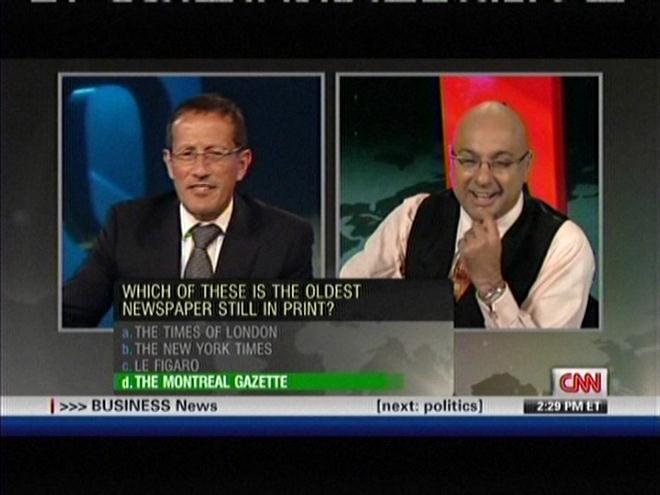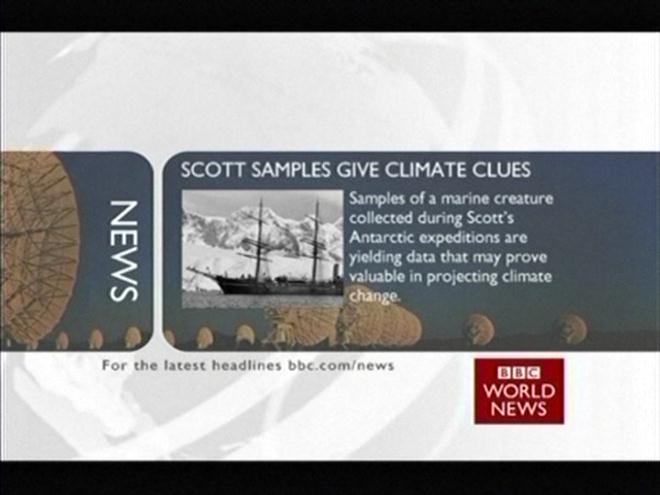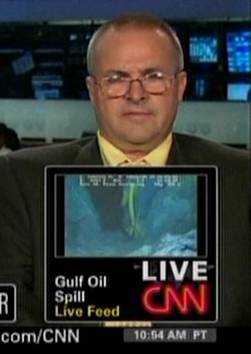Every summer, on every Canadian TV channel, during just about every commercial break, a commercial for Marineland in Niagara Falls is shown… with a song that just drives me bonkers. I’d sooner listen to a hundred pieces of chalk scratching a hundred chalkboards. Will they ever stop?
Last night, my wife and I watched Barney’s Version on Blu-ray. I really loved Mordecai Richler’s novel, and the movie is true to its spirit; it is, in fact, a remarkable well done film. Too bad it didn’t do particularly well in the box office; it deserved better.
Here’s an interesting argument explaining why the decision to dilute CBC Radio 2 could be strategically devastating for the CBC: the supporters they lost were not only vocal in their opposition to the changes, but also the most fierce defenders of continuing government support and funding for the CBC. No offense to rapper “Buck 65” but I seriously doubt that his listeners would write to their MPs when the CBC’s funding is threatened… certainly not with the same ferocity as listeners of Jurgen Gothe’s unforgettable Disc Drive did while that program was still on the air.
When public institutions hire executives from the private sector, they must keep this in mind. The much coveted younger demographic may not be what public institutions need to go after… as they are not necessarily the ones most likely to vote.
Superman, it seems, is renouncing his American citizenship. Wow. My only question is… why now? Why not in 2003?
I am listening to the Classical stream of CBC radio, and the music selection is very good. It is also utterly soulless.
You see, radio without presenters is no radio at all. I miss the likes of Jurgen Gothe who’d tell me something about the music. Why it was composed. When it was composed and where. Something about the composer, and why this particular piece was chosen to be played tonight.
For instance, right now I am listening to the 1st movement of Bax-Arnold’s Concertante. Back in the good ole’ days, Jurgen Gothe would have told me who this Bax-Arnold was. Yes, I can use Wikipedia and find out that “Bax-Arnold” is really English composer Sir Arnold Edward Trevor Bax, and that he wrote several pieces titled Concertante between 1918 and 1949, and thanks to Google and the disk number provided by the CBC, I can even figure out which of these is being played (it’s the Concertante for Piano Left Hand) but Internet searches are no substitute for the warm, friendly voice of a radio host who would tell me all this and more, anecdotes, back story, or completely irrelevant trivia about Ashley Wass on the piano, conductor James Judd, or perhaps the Bournemouth Symphony Orchestra and its relationship, if any, to the Bayview Retirement Home in Bournemouth in the British sitcom Waiting for God.
The music now changed. CBC now informs me that I am listening to the 3rd movement, Marche Funebre, by a composer named “Not Found”. Whatever happened to poor Chopin that a national radio station can no longer find his name?
Not to mention that unlike this sterile Classical stream (really just an endless playlist with an incomplete tombstone database), CBC Radio 2 wasn’t purely classical. Jurgen Gothe in particular had an eclectic selection of classical and modern, pop and jazz, Canadian folk music, and more. He was always full of surprises. The changes made to CBC Radio 2 just drastically narrowed the station’s scope for much of the broadcast day, because now, the richest musical genre of all (really, a collection of many genres) is simply excluded.
No wonder I nowadays listen to BBC 3 more than the CBC.
You gotta love these talking heads on TV.
A few minutes ago, I was listening to a CNN expert (I made a note of his name but it’s not relevant; this is not meant to be a personal attack on anyone but a criticism of television journalism in general, putting talking heads who know little more than the general public in front of live cameras). The expert was discussing the possible fate of the Fukushima nuclear power plant, making comparisons between the events unfolding in Japan and what happened 25 years ago in Chernobyl. This is when he uttered the sentence, “in Chernobyl, the core got uncovered“.
The problem with this utterance is that the core in Chernobyl was never covered (with water) in the first place.
The RBMK reactor used in Chernobyl has a graphite core that is not submerged. Water circulates in channels. What happened in Chernobyl was not that the core was uncovered, but that water boiled away. The resulting voids (containing only steam, far less dense than water) were no longer absorbing neutrons (which were still moderated by the graphite, but now in greater numbers), further accelerating the rise of heat in the reactor, producing more voids in a runaway reaction. Nothing like that can happen in a water-moderated reactor, where boiling the water away reduces the reaction rate, as fewer neutrons are moderated.
That is not to say that such a reactor cannot suffer a catastrophic meltdown. This is what happened at Three Mile Island, when a reactor’s core there was indeed uncovered due to errors in operating procedure and a stuck valve. In Three Mile Island, what saved the day was a reactor containment vessel that prevented a Chernobyl-type release of radioactive material to the environment. I fear that rather soon, we’ll find out just how good the containment vessel is at Fukushima I-1.
Back in the 1950, movie studios switched to widescreen in order to arrest the loss of audiences due to the emergence of television. The intent was to create a format that was intentionally incompatible with the 4:3 aspect ratio of the television screen.
In the 1990s, various standards for high-definition television were proposed but they never caught on; I suspect that part of the reason was that regular television already provided a signal that was of sufficient quality for most viewers.
So, our masters and secret overlords reinvented the wheel: a new high-definition television standard emerged that not only increased the number of pixels you see, but also changed the width. Instead of 4:3, we now had a new standard with a 16:9 aspect ratio.
I don’t know if 16:9 is in any way “better” than 4:3. I suspect it isn’t, actually (you may think HDTV adds pixels on the left and the right but it’s equally valid to think that it’s taking pixels at the top and the bottom away) but it doesn’t matter. What matters is that in the minds of most people, “HDTV” has little to do with “definition” (i.e., pixel resolution) and a lot more to do with the wide aspect ratio. What they may not realize is just how badly we have been cheated.
Why? Well, take that nice shiny new HDTV that you just unpacked and hung on the wall, verifying that all 100% of its pixels work as they should:

So you turn that TV on and tune it to the first station, which happens to be an analog station (or perhaps a digital station sending a non-HDTV signal). Unless your TV has been factory set to “stretch” (and distort) the picture, chances are that you will see two wide black bars on both sides of the narrow picture:

Not too bad, perhaps, but what if that non-HDTV signal was actually originally an HDTV program? Happens more often than one might think, especially as a growing number of non-HDTV stations are just rebroadcasting an HDTV signal with horizontal bars at the top and bottom:

And that, unfortunately, is not the end of it. That original HDTV signal often contains clips that were shot in the 4:3 aspect ratio, which means… yes, more black bars:

And this is not an extreme case. It happens quite regularly. Here’s an example from CNN just a few minutes ago:
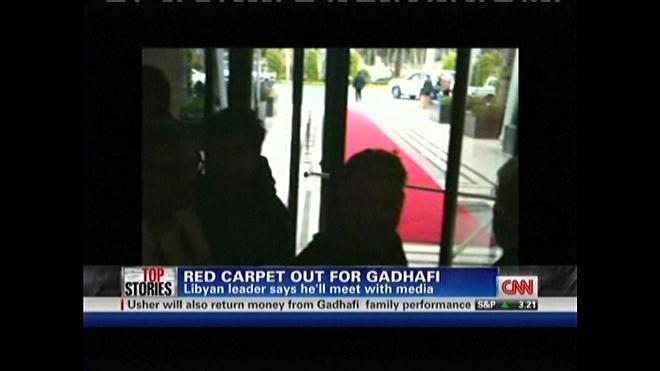
There is the set of horizontal bars at the top and bottom and, apart from the news ticker at the bottom, two sets of vertical black bars framing the picture. That shiny new HDTV with its 42″ full-HD screen is suddenly reduced to a 26″ diagonal visible area with the resolution (1080×810) of a decade-old laptop.
Progress is wonderful, I guess. The good thing is, you can all watch it in stereoscopic vision, I mean “3D”; so long as you don’t mind wearing goofy glasses, taking lots of Aspirin for that nasty headache, and not moving your head around too much, lest the lack of parallax destroy the illusion.
I swear that when I first saw this news headline frame on BBC World News, I thought I was looking at a herd of sheep in a field:
In reality, I think, these are some of the antennas of the Very Large Array.
Years ago, back in 2002 to be precise, I had an idea. Having just re-read Tolkien’s immortal The Lord of the Rings trilogy, I suddenly realized that there may be two sides to this story. That the book, which I enjoyed so much and read so many times, may just be an overly simplistic version of the history of Middle Earth, as told by the victors. So what if I tried to write down the history of the One Ring and the all-encompassing War of the Ring between Gondor and Morder from the perspective of a Mordorian orc?
I actually sat down and began writing the story, but I never got past the first page. No author, I.
Little did I know that the story I wanted to write was already written, published by a Russian author, Kirill Yeskov, in 1999. In it, just like in the version I envisioned but never wrote, Gandalf is a great manipulator; Aragorn is little more than a highway robber turned usurper; and the “evil empire” of Mordor is, in fact, a land of industry, science, and technology, despised by the magic-wielding but oft illiterate feudal lords of Middle Earth’s West.
In short, Yeskov wrote the story I wanted to write, only he did it much better than I could or would have. And Yeskov’s book is finally available in a (very) decent English translation, as a free download. I downloaded it yesterday, printed it, even bound it in the form of a little book, and now I am enjoying every page of it. Yes, surprisingly, it is actually a page-turner! And also an eye-opener.
I have no idea yet how the story will end. The ending will probably be a lot less neat and tidy than the ending of Tolkien’s version. But, it may also be a lot closer to “reality”.
I think it’s a fitting irony that Yeskov’s book was never officially published in English, as publishing houses feared the wrath of the Tolkien estate. When we say that history is written by the victors, what we really mean is that the victors are usually successful at preventing any version of history other than the official one from reaching bookshelves. It seems that the situation is no different in the case of Tolkien’s fantasy world.
My Linux systems are all configured with an ages old program, fortune, giving me a “fortune cookie”, a random greeting or quotation from a database with thousands of entries, every time I log on.
This morning, I logged on to one of my Linux machines and I saw this quote from the immortal Sam Clemens, aka. Mark Twain:
“The difference between a Miracle and a Fact is exactly the difference between a mermaid and a seal.”
If I didn’t know any better, I’d be tempted to think that the computer has a twisted sense of atheist humor and chose this greeting after looking at the calendar. Not that Mr. Clemens was wrong!
Anyhow, although I am an atheist, I hope I am not twisted, so I just wish a Merry Christmas to all my family and friends, and indeed, all good people.
Here’s a wonderful quote from Saturday Night Live’s impersonation of Julian Assange talking about Mark Zuckerberg: “What are the differences between Mark Zuckerberg and me? Let’s take a look. I give you private information about corporations for free. And I’m a villain. Mark Zuckerberg gives your private information to corporations for money and he’s Man of the Year.”
SNL’s Assange also praised Time magazine for being on top of things, discovering Facebook “only weeks after your grandmother”.
Going to Cuba to interview Fidel Castro, I suspect the one thing no journalist expects is to hear is words from the Leader of the Revolution that would put many ordinary Cuban citizens in jail. Words like, “Cuban Model Doesn’t Even Work For Us Anymore”. Yet, apparently, it was precisely this that Castro told Jeffrey Goldberg, a correspondent of The Atlantic.
I think I’ll listen to some Buena Vista Social Club music this morning. Ah, there’s Ibrahim Ferrer’s CD, I haven’t listened to it in years, and I just ripped its contents the other day. Time to check those MP3s…
Here’s a headline from Google News that illustrates just how difficult it is for a non-native speaker of English (or, for that matter, for many a native speaker!) to understand journalists:
ABC Online: Houston expects changes for diggers under Petraeus
OK, so if you watch the news at all, you’d know that Petraeus is the US general who’ll be taking over in Afghanistan. But unless you also know that “ABC” can refer to the Australian Broadcasting Corporation, that Angus Houston is Australia’s Chief of the Defense Force, and that “digger” is a slang term for Australian or New Zealand soldiers, you could be excused if you thought that this was not an article title but a cryptic crossword entry.
This Homer Simpson is one smart fellow. While he was trying to compete with Edison as an inventor, he accidentally managed to discover the mass of the Higgs boson, disprove Fermat’s theorem, discover that we live in a closed universe, and he was doing a bit of topology, too.
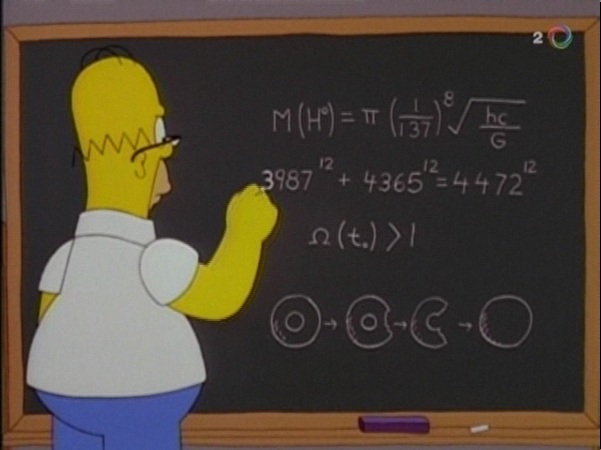 His Higgs mass estimate is a tad off, though. Whether or not the Higgs exists, the jury is still out, but its mass is definitely not around 775 GeV.
His Higgs mass estimate is a tad off, though. Whether or not the Higgs exists, the jury is still out, but its mass is definitely not around 775 GeV.
Sometimes, CNN uses a “picture-in-picture” format to show an important live feed while they are reporting on something else. It is important to make sure that the resulting composite picture does not convey the wrong impression. Otherwise, you might end up like this poor gentleman, who was talking on CNN about a new portable power source, but ended up appearing as if he was getting a chest X-ray on live television.
I was watching the noontime local CTV news today. At around 12:39 (!), in three consecutive reports, the number 39 popped up. First, a report about a youth who is charged with vandalizing 39 tombstones. This report mentioned the number 39 several times, which is probably why I noticed that in the next report, one about the recent terrorism-related arrests in the US, footage shown in the background included the front door of a house bearing the number 39. At this time, I began paying attention. The next report was about Ottawa tourism advertisements in American newspapers; it didn’t seem likely that the number 39 would pop up there until the official being interviewed answered a question about funding and mentioned their 39 member hotels. That’s when I told my wife that this is getting a tad creepy.
The other day, I was watching a Stargate Universe episode in which one of the protagonists was reliving a part of his life while his brain was connected to an alien computer, and a particular number kept popping up as a clue. That number was 46, the number of chromosomes in a human cell. So that’s what makes 46 special. But what about 39?
Or perhaps all this was just a clever form of subliminal advertising for a Web site called The 39 Clues, which happens to be the first hit on Google when one searches for “39”?
